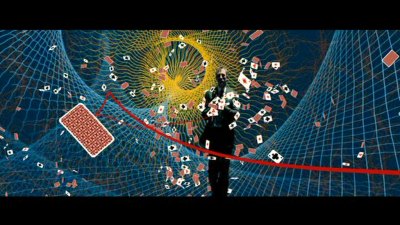
The important thing to remember is this: James Bond was not a lithe, “pantherlike” superhero. He was, in the words of Anthony Burgess, a “globetrotting clubman,” who looked more comfortable at a dinner table than in a gym. In just about every novel Fleming took pains to emphasize this fact, juxtaposing him with a variety of dominating physical specimens: Oddjob, Donovan Grant, Scaramanga, the 7-foot-tall Dr. No. In each case he won by cunning and guile, not brute force. He was a good shot, true, and he was lucky, but his victories were due more to what the British would call “pluck” than they were to any physical preeminence. In the tradition of British heroism, he was a gentleman who, by dint of breeding, bearing and a stiff upper lip (and, truth be told, conniving and subterfuge when necessary), somehow managed to muddle through to victory.
Dana Stevens says that the point of casting Craig was to “subvert the Bond brand.” That’s kind of sad, because the Bond brand, as has been represented in film thus far, has never been anything but a subversion.
Special thanks to “Blowfeld”
Click Here To Discuss This In Our Forum
slate.com
Remarks from the Fray
By DemiMundaneI don’t have any problem with a protean James Bond. But I believe Daniel Craig, however talented he may be, as a physical specimen is as off the mark as Sean Connery or Pierce Brosnan ever were. That’s not a bad thing. Movies freely interpret characters from novels all the time, and actors are free to bring new slants to familiar heroes. But let’s not wet ourselves by imagining that Craig is an echt representation of Ian Fleming’s overworked icon.
Start with the fact that the James Bond of the novels was decidedly not ripped or rugged. In Thunderball Fleming sends him to a health spa because the “flabby arms of civilization” have taken their toll on his physique. That’s not just a plot device, although it serves as one. Bond drinks too much, smokes too much, and is unlikely to be found doing 200 push-ups off a chair every morning. His kind of recreation is the sort you can do in a dinner jacket at a gambling table.
In Casino Royale the novel, Fleming describes Bond as looking like Hoagy Carmichael, with a “comma of hair” falling over his brow (note to Dana Stevens: we would call that a side-part). The picture of Carmichael I just linked to is arguably rugged enough, perhaps, to be confusable with Daniel Craig’s Bond, but you really need to see film of Carmichael to get the real image in your mind. Try the Bacall/Bogart picture To Have and Have Not if you have a chance. There you’ll see a rather slender, smallish man who looks a lot more like Edward Fox than he does Daniel Craig (or Sean Connery, or Pierce Brosnan, or Timothy Dalton).
The important thing to remember is this: James Bond was not a lithe, “pantherlike” superhero. He was, in the words of Anthony Burgess, a “globetrotting clubman,” who looked more comfortable at a dinner table than in a gym. In just about every novel Fleming took pains to emphasize this fact, juxtaposing him with a variety of dominating physical specimens: Oddjob, Donovan Grant, Scaramanga, the 7-foot-tall Dr. No. In each case he won by cunning and guile, not brute force. He was a good shot, true, and he was lucky, but his victories were due more to what the British would call “pluck” than they were to any physical preeminence. In the tradition of British heroism, he was a gentleman who, by dint of breeding, bearing and a stiff upper lip (and, truth be told, conniving and subterfuge when necessary), somehow managed to muddle through to victory.
Dana Stevens says that the point of casting Craig was to “subvert the Bond brand.” That’s kind of sad, because the Bond brand, as has been represented in film thus far, has never been anything but a subversion.
Special thanks to “Blowfeld”
[Click Here To Discuss This In Our Forum



